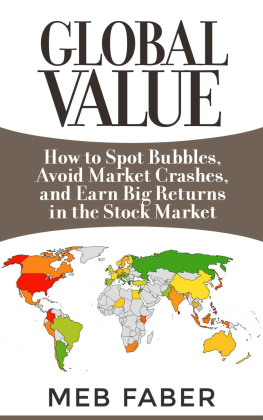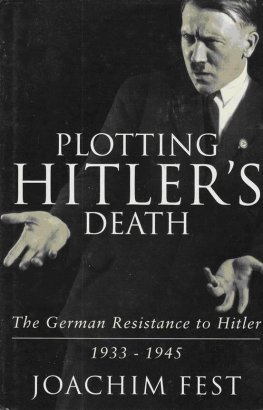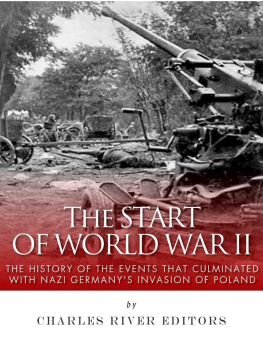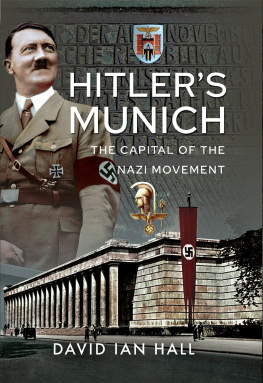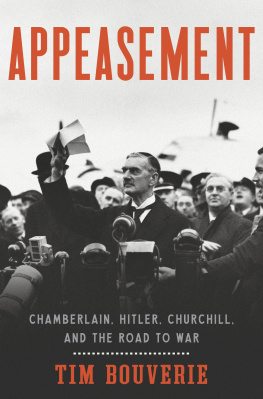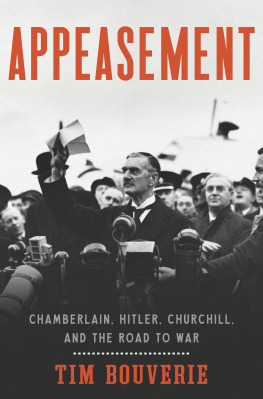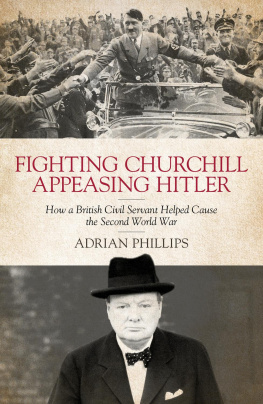MUNICH, 1938
Appeasement and World War II
DAVID FABER


Simon & Schuster
1230 Avenue of the Americas
New York, NY 10020
www.SimonandSchuster.com
Copyright 2008 by David Faber
Originally published in Great Britain as Munich in 2008 by Simon & Schuster UK Ltd.
All rights reserved, including the right to reproduce this book or portions thereof in any form whatsoever. For information address Simon & Schuster Subsidiary Rights Department, 1230 Avenue of the Americas, New York, NY 10020.
First Simon & Schuster hardcover edition September 2009
SIMON & SCHUSTER and colophon are registered trademarks of Simon & Schuster, Inc.
For information about special discounts for bulk purchases, please contact Simon & Schuster Special Sales at 1-866-506-1949 or
business@simonandschuster.com.
The Simon & Schuster Speakers Bureau can bring authors to your live event. For more information or to book an event contact the Simon & Schuster Speakers Bureau at 1-866-248-3049 or visit our website at www.simonspeakers.com .
Manufactured in the United States of America
1 3 5 7 9 10 8 6 4 2
Library of Congress Cataloging-in-Publication Data Faber, David.
Munich, 1938 : appeasement and World War II / David Faber.
p. cm.
Includes bibliographical references and index.
1. Munich Four-Power Agreement (1938) 2. World War, 19391945Causes. 3. World War, 19391945Diplomatic history. 4. EuropePolitics and government19181945. I. Title.
D727.F34 2009
940.53112dc22
2008044896
ISBN 978-1-4391-3233-3
ISBN 978-1-4391-4992-8 (ebook)
PHOTO CREDITS
1, 4, 5, 6, 8, 9, 10, 12, 13, 15, 16, 17, 18, 20, 21, 22, 23, 24, 25, 27, 28, 31, 32, 33, 34, 35, 36 Getty Images 2 Solo Syndication/ Associated Newspapers Ltd.
3, 7, 26, 29, 30 AKG Images
11 Bayerische Staatsbibliothek Mnchen Hoffmann
14 Corbis
19 NI Syndication
For my mother
who remembers the Czech refugees
at Birch Grove
Contents
Prologue Heston
COUNSEL: Mr. Chamberlain. You are charged that on the night of September 30th, 1938, you did indecently expose yourself at the windows of your home, No. 10 Downing Street, clad only in a scrap of paper and shouting Peace With Honour, Peace With Honour. How say you, guilty or not guilty? CHAMBERLAIN: Im not sure.
Alan Bennett, Forty Years On, 1968
Friday, September 30, 1938, was a clear, sunny, late summers day. Throughout the afternoon, huge crowds had been gathering at Heston Aerodrome, west of London, many of them lured there by the blanket coverage in the morning newspapers. The Prime Minister, Neville Chamberlain, would be making a triumphant return from his meeting with the German Chancellor and Fhrer, Adolf Hitler, at Munich. PEACE! screamed the headline in the Beaverbrook-owned Daily Express, the three-inch-high letters set in the largest typescript ever seen on the front of a British newspaper.
As the afternoon wore on, the traffic on the Great West Road became increasingly congested, to the extent that, as more and more cars converged on the area, the narrow approach roads to the airport ground to a halt in both directions. Many onlookers, desperate not to miss witnessing the moment of Chamberlains return, simply abandoned their cars beside the road, and decided to walk the last mile or so instead.
By 5 P.M. there were several thousand onlookers cramming the approach roads, and pressed up against the perimeter fence of the airport. The police had eventually been forced to close the roads in the immediate vicinity of the airport, and to prevent anyone further from gaining access who was not in possession of an official police pass. Many, however, were already safely inside, and had been waiting for several hours. Just inside the airport gates were schoolboys from nearby Eton College, who, on their own initiative had sought and obtained permission to be there, and had formed an impromptu guard of honor along the tree-lined avenue that led to the main terminal. Others had climbed onto the roofs of the airport buildings, or had gathered behind the rope and timber barriers that marked out the landing enclosure. On the tarmac itself, an impressive array of VIPs had assembled, headed by the Lord Chamberlain, the Earl of Clarendon, who had been sent to represent the King and had arrived in good time. Alongside him was the Lord Mayor of London, Sir Harry Twyford, assorted Cabinet ministers, the High Commissioners of all the Dominions, and the ambassadors of France and Italy, together with the German charg daffaires.
Only the Foreign Secretary, the Earl of Halifax, had been less well organized. He and his wife had been collected from his home in Eaton Square by the Permanent Under-Secretary at the Foreign Office, Sir Alexander Cadogan, and they made painfully slow progress through the heavy traffic. As they approached Heston the sunshine gave way to a sudden, heavy downpour of rain, and at one stage Cadogan was forced to drive his car down the wrong side of the road, almost unable to see through the windshield. A quarter of a mile from Heston, on hearing the distant sound of an aircraft, Cadogan accelerated, and crashed his way through the crowds at the gates, the Foreign Secretary brandishing his police pass at the hapless constables on duty. At 5:38 P.M. the waiting crowds, by now drenched by the sudden cloudburst, also heard the roar of aircraft engines, and a few moments later the outline of the silver airplane could be made out against the thick, gray cloud.
The aircraft in question was the very latest addition to the British Airways fleet, a Lockheed 14 Super Electra, call sign AFG-N, which had been delivered from the United States at the beginning of September. Just a fortnight earlier it had set a new aviation distance record during its maiden flight, traveling nonstop to Stockholm and back in just over ten hours. A few days previously it had also carried Chamberlain on his second visit to Germany, indeed only the second time he had ever flownto Bad Godesberg on the Rhine, by way of Cologne. On that occasion, Chamberlain had later described his return to the Cabinet.
That morning he had flown up the river over London. He had imagined a German bomber flying the same course. He had asked himself what degree of protection we could afford to the thousands of homes which he had seen stretched out below him and he had felt that we were in no position to justify waging a war to-day in order to prevent a war thereafter.
Just as Cadogan pulled up alongside the other waiting cars on the tarmac, the Prime Ministers plane landed, followed by a second identical aircraft carrying his supporting officials. Both aircraft taxied toward the waiting crowd of dignitaries, press correspondents and the general public. Possibly because of the heavy rain, the pilot appeared to overrun the main airport terminal, and he eventually came to a halt outside a nearby hangar, forcing the reception committee to half-walk, half-run to ensure that they kept up. As the door swung open, the crowd surged forward as Chamberlain appeared. It had been a long and tiring journey, but he looked animated
As the waiting journalists closed in around him, cameras and microphones were hastily erected to record his words. The BBC, their coverage anchored by the television reporter Richard Dimbleby, broke into their output to cover Chamberlains speech live on the radio, while both television and newsreel cameras recorded the proceedings for broadcast that evening. Chamberlain paused for a moment, before addressing the crowd. There are only two things I want to say, he began.




